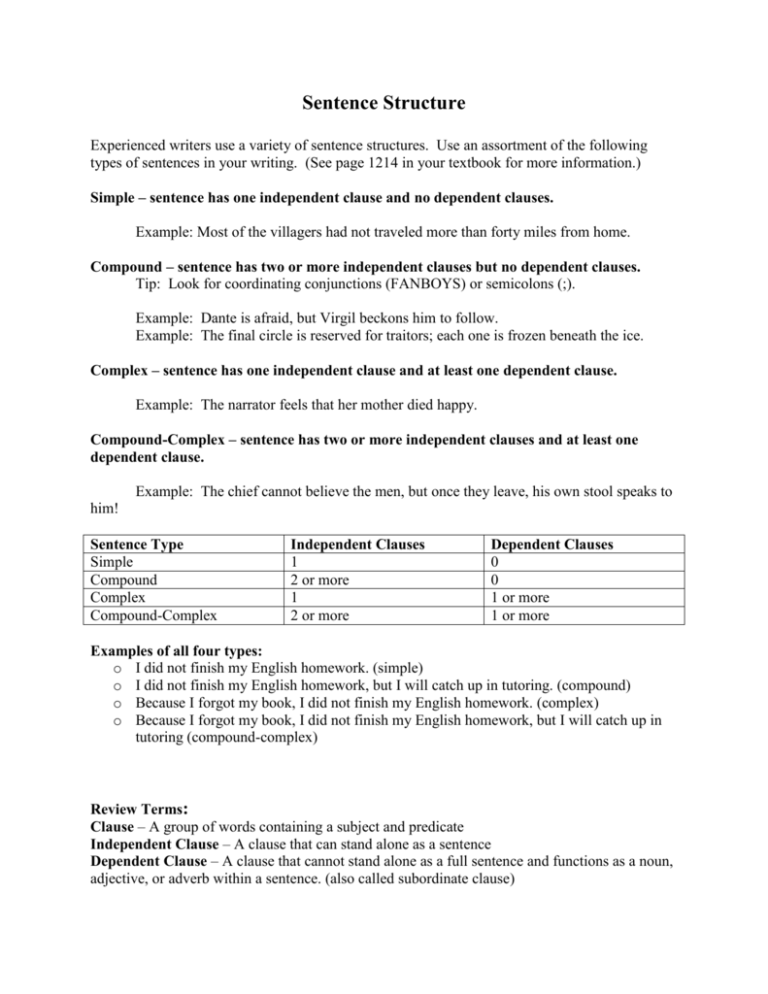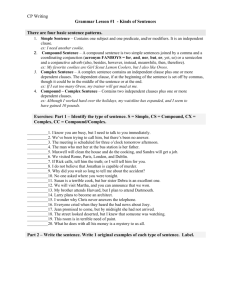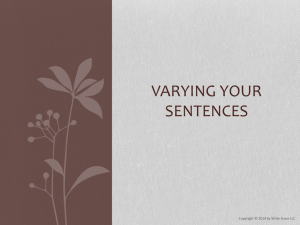sentence structure
advertisement

Sentence Structure Experienced writers use a variety of sentence structures. Use an assortment of the following types of sentences in your writing. (See page 1214 in your textbook for more information.) Simple – sentence has one independent clause and no dependent clauses. Example: Most of the villagers had not traveled more than forty miles from home. Compound – sentence has two or more independent clauses but no dependent clauses. Tip: Look for coordinating conjunctions (FANBOYS) or semicolons (;). Example: Dante is afraid, but Virgil beckons him to follow. Example: The final circle is reserved for traitors; each one is frozen beneath the ice. Complex – sentence has one independent clause and at least one dependent clause. Example: The narrator feels that her mother died happy. Compound-Complex – sentence has two or more independent clauses and at least one dependent clause. Example: The chief cannot believe the men, but once they leave, his own stool speaks to him! Sentence Type Simple Compound Complex Compound-Complex Independent Clauses 1 2 or more 1 2 or more Dependent Clauses 0 0 1 or more 1 or more Examples of all four types: o I did not finish my English homework. (simple) o I did not finish my English homework, but I will catch up in tutoring. (compound) o Because I forgot my book, I did not finish my English homework. (complex) o Because I forgot my book, I did not finish my English homework, but I will catch up in tutoring (compound-complex) Review Terms: Clause – A group of words containing a subject and predicate Independent Clause – A clause that can stand alone as a sentence Dependent Clause – A clause that cannot stand alone as a full sentence and functions as a noun, adjective, or adverb within a sentence. (also called subordinate clause)











